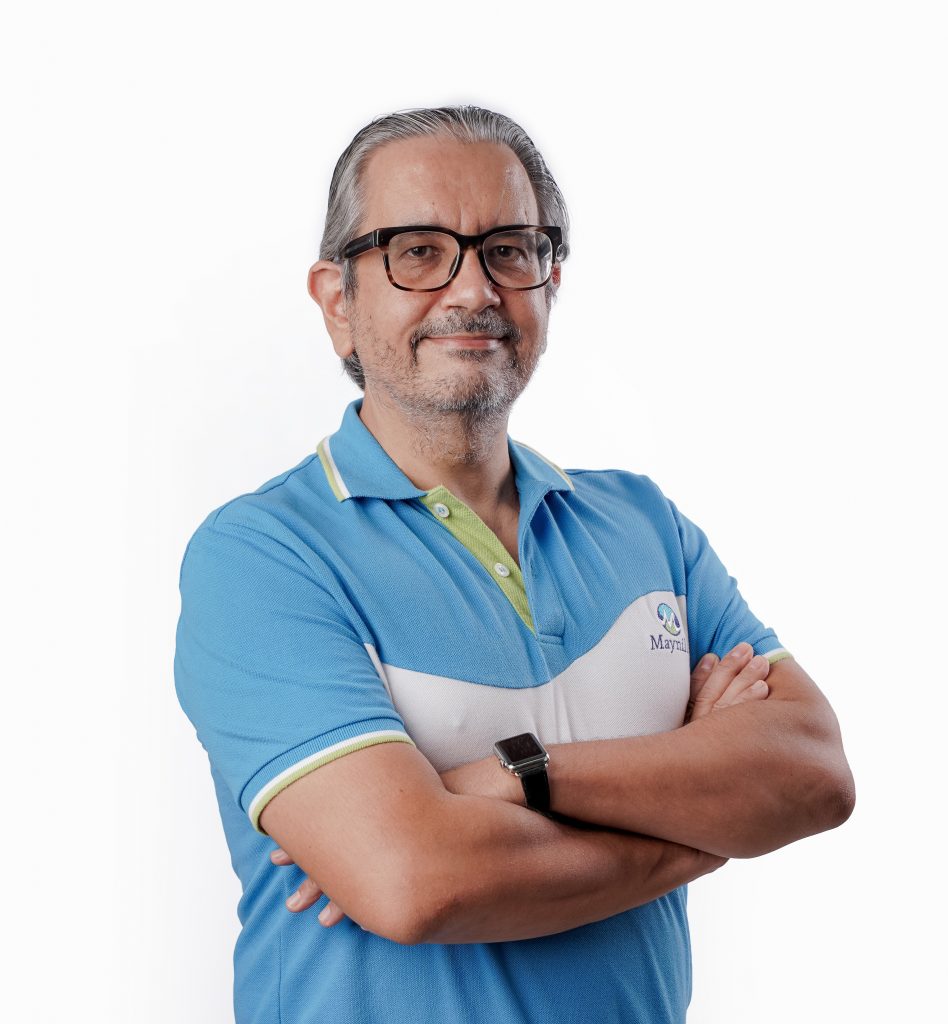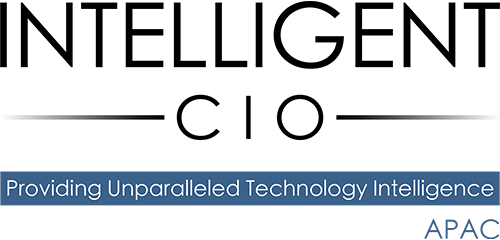Leveraging technology to satisfy business needs and goals
Maynilad Water Services is the largest private water concessionaire in the Philippines in terms of customer base. It is the water and wastewater services provider for the 17 cities and municipalities that comprise the West Zone of the Metropolitan Manila area. Intelligent CIO spoke to its CIO Francisco Castillo about the importance of strategy in the role, using technology to improve business processes and making an integrated IT and OT setup work.

You’re the writer of a book called Managing Information Technology. What can CIOs learn from this?
It’s actually a book written not about technology, but it’s a book about how to manage technology, which I thought was something that is lacking. Because during my early days as CIO, I searched for, things to help me and I was not able to find anything.
So it’s really a guide, so to speak, to learn from years of experience and I guess the pains of that in terms of managing a technology organisation, and how to at least minimise the risk and maximise the success of it. It really talks about organisation structure. It talks about governance, about how to manage IT operations and how to manage IT projects.
Do you make a distinction in the book between strategy and day-to-day operations?
Yes. Day-to-day operations is really about keeping the lights running and that has to be balanced as well with strategy because it evolves continuously. So one has to be prepared to change and to manage that change effectively. That’s the dual role of the CIO. The third probably most important role is being able to translate business needs into technical requirements that can be implemented through projects. Sometimes that’s the big gap, the business leaders have an idea of what they want but they don’t know exactly how it can be done. Usually that means doing it through technology. On the other hand, the technologists are not fully aware of what the business needs are so one has to marry both.
Can I ask about your own organisation? How have you used technology to improve your own business processes?
When I started 10 years ago, it was really more about redefining and streamlining processes in the organisation. So that meant implementing transactional systems that would make our core processes more efficient.
So we are talking about procurement processes or supply chain processes, inventory, metre reading and billing. Once that has been in place the shift now goes to analysis. It shifts now to how to analyse the data that you have. In the beginning, this is merely by simple reports, but later on it evolves into in-depth analytics and an ability to forecast. You have the data and you look at the historicals, but then when you have enough you need to be able to forecast so that’s the whole evolution that we went through.
What is the importance of having a single source of truth in terms of data?
It’s really important to have that single version of the truth. In our company we have really two main sources. One is the data warehouse, which really contains mostly data on sales, consumption, finance and logistics, and then we have an IoT platform which contains technical data. So both are important and the key is keeping the data clean.
You need to have the data clean so that you can trust it. Now that’s simple to say, but it takes a while and it’s more a technology management concern. It’s all about having people responsible for the data having a buy-in, in terms of their role, and making sure that when they validate the data that means that the data there that is loaded is good. From there you can build whatever you want – that’s the essential.
Your organisation operates an integrated IT and OT setup. How does that work?
It sort of happened by accident. I wish I could say it was better planned but in a previous life I had experience in OT. I worked at the plant so I had experience with plant automation.
We have a lot of plants. We have more than 200 plants all over. In fact, we service about 9 million people in our concession area so we’re a pretty big outfit.
There was some void in terms of who is in charge of the automation of these plants because during that time they were starting to get fully automated.
I was volunteered for the work by my boss so that’s really when it started.
Looking back I think there’s huge advantages by having an integrated IT and OT. There are a lot of companies trying to do this but again, it’s a political challenge because usually you have two groups, and nobody wants to give up control so you end up not being able to really fully integrate and fully utilise everything.
So I always say that my advantage is I can’t argue with myself, I’m responsible, so I just make it happen. The OT data really is very valuable for management, but it has to be presented in a way that is meaningful. That means it usually has to go through IT tools to do that. So that’s really the benefit, we have the data in the OT side and then once you put it into the IT systems, you process it, and then either by means of reports or analysis, that actually becomes meaningful to management.
What part does real time analytics play in running a water company?
We don’t have everything automated – to have everything automated is very expensive. So, for example, we don’t know how much each individual customer is consuming in real time, we still read the metre every month. But we do know for our larger industrial customers how much consumption they have and what is the profile of consumption (because there’s certain patterns). We also know the pressure and the flow of water by sectors. We call them DMAs (District Metering Areas) so that’s actually near real time. Every 15 minutes, we get the data and so we can see exactly what is happening and we can react.
For example, if there’s a pressure loss in one area that means that people will stop receiving water, and, of course, we’ve got to investigate why. At the same time you can do something about it and divert, for example, water from one area to another or increase the pressure with the pump so that you’re still able to deliver the intended pressure. So it’s actually very important to us.
How far do you see IT as an enabler that allows you to provide other people within your organisation with the tools they need to succeed?
I would say that our business is a bit special and difficult. We’re a private company by the way so that means my boss looks at the bottom line.
That means increasing revenues or decreasing costs. In a highly regulated environment revenues are limited by what can be approved by the regulatory office.
So you’re left with costs and bringing down costs is not so simple. In the beginning you have things within easy grasp that you can do to improve but as the business evolves and gets more efficient it gets more and more difficult to drive down costs.
And that’s where technology plays a large part in many different forms. Say for example in electricity consumption of the plants.
By, for example, using VFDs and automating the plants we have experienced a significant decrease in electricity consumption.
Water leaks are actually one of our biggest enemies, because you don’t only lose water you basically dump the chemicals that you’ve spent money on, plus there’s the cost of electricity in pumping it.
So we have technologies that allow us to detect where leaks are most probably present in our network.
Now we have the lockdown on and who would have thought before that the whole organisation could shift to a work from home environment and we were doing a lot of things that we could never have imagined could be done virtually including diagnosing our plants when there’s a fault. Before we go to the plant we try to diagnose and see what the cause of the fault is remotely. Of course, all of this is done in a secure way which is the other challenge.
What have been the main IT achievements of your organisation in recent years?
Last year we renewed our ISO 20,001 certification that’s the IT Service Management certification, which we have held since 2015. We also renewed our SAP CCOE that’s the Customer Centre of Expertise. We actually scored 198 over 200. In fact, two years ago, SAP proposed us for the global award. We were the first Asian company to qualify which is nice. I think we’re the only one in the Philippines who has this SAP CCOE recognition.
We also won this award last year. It’s called the Philippine Enterprise Innovation Award. This was mainly due to our effort that we made in terms of doing what we call factory acceptance tests of the plants virtually.
Plus we actually built a digital twin of our plants. So that, before we actually put the control systems in the plant, we can emulate it and see if something is wrong. Usually we catch 99% of the bugs. It’s actually something that we planned but got accelerated, precisely because of this lockdown.
Looking ahead, what technologies are you going to be looking to invest in?
Well one obvious choice is security. Security is a cat and mouse game that never ends. You have to continuously invest, continuously renew and stay updated because what was good two years ago is no longer valid today. Of course, we will continue investing in automating our plants, because that’s the core of our business.
And when I say automating it’s also hooking it up to our IoT platform. So our IoT platform is just growing and growing. Every time we have a new facility we put it in.
Now we have 10 years almost, of good historical data. So now we’ve initiated a number of data analytics projects. The idea there is looking at the history, can we now forecast what is going to happen in the future?
So I’ll give you an example. A lot of our business depends actually on the condition of weather. Last year we had a very big typhoon that within hours dumped a whole lot of rain in our catchment area. So that’s good in terms of water level but it’s very bad in terms of turbidity because it eroded a lot of the soil.
One case study that we were developing is how to predict incidences of high turbidity by knowing the weather predictions, so that we’re ready with the people, we’re ready with the chemicals. We’re ready with the advisories for customers warning this may happen.
Another example is being able to better predict our demand for water. So, there are patterns, there’s certain seasonalities. What we had before in an intuitive way, the idea now is to put it in a quantitative way so that we have a better hold of what we need to do to meet that demand.
What advice would you give to aspiring CIOs?
I think the biggest challenge really that I see is we need to align technology to the business needs. That is so important. And I see a lot of projects being done, because they’re fashionable, or you know they’re sexy and so forth. But they usually fail to meet certain business needs. You have to start looking at the business need and see how you can satisfy that business objective by using technology, not the other way around and that is not always apparent. It takes a lot of exploration in terms of understanding what is really the challenge to our business leaders and then coming up with what they need.
Click below to share this articleSignup to the Intelligent CIO APAC newsletter and never miss out on the latest news

